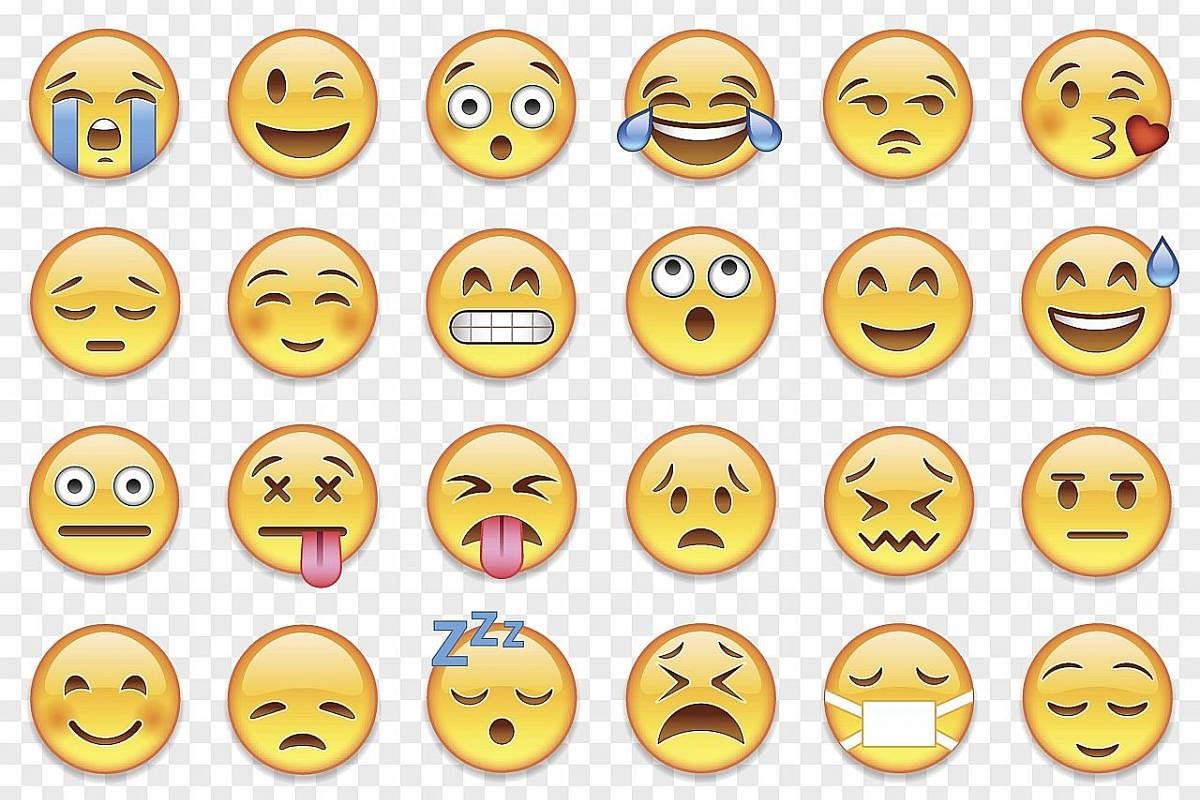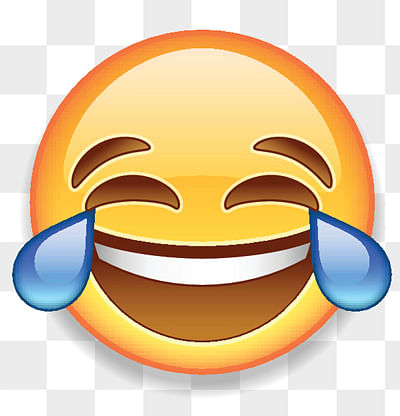How emojis have changed the way people communicate
They are succinct, can be used to soften the tone or add emphasis and have become a part of everyday communication

Show an emoji of an aubergine to an older person and a millennial and you might elicit different reactions.
To the older person, at first glance, the aubergine would probably mean little more than the purple-hued nightshade, also known by its other names of eggplant and brinjal.
To an adolescent, millennial or anyone savvy about social media trends, the seemingly innocent aubergine connotes a lot more than a plain old vegetable.
Think phallus, a symbol of manhood.
Last Monday marked World Emoji Day, a day that celebrates emoji or pictographs that express an emotion, object or an idea.
Indeed, in this digital era, emoji, once the preserve of texting teens, have become more widespread and are no longer limited to just young people.
They have become so firmly ensconced in day-to-day communication streams that in 2015, Oxford Dictionaries even chose an emoji known as the "Face with Tears of Joy" as its Word Of The Year (see sidebar).
On Facebook, 60 million emoji are exchanged every day and another five billion emoji are used on Facebook Messenger alone.
They are also used extensively on Twitter and Instagram as well as on other social media and mobile messenger programmes such as WhatsApp.
Swiss tennis player Roger Federer, for one, uses emoji frequently on Twitter and has even described an entire day in 43 emoji.
The word emoji comes from the Japanese word e, for picture, mo, for writing, and ji, which means letter or character.
They were developed and launched in 1999 as part of Japanese telco NTT Docomo's debut of its i-mode phone - the world's first major mobile Internet system.
Emoji help to inject tone and body language into what otherwise would be plain text.
They are an alternate way to convey nuances and, in some instances, also have the ability to effect an emotion or thought across language and cultural barriers. Examples include a smiley face, a thumbs-up or a wink.
Emoji, however, are not to be confused with the emoticon, a portmanteau of the words emotional and icon. An emoticon is a typographic representation of a facial expression - such as :-) - that is used to convey emotion in text.
Associate Professor Michelle Lazar, of the National University of Singapore's Department of English Language and Literature, views emoji as another "communicational resource".
"Social and digital media platforms have given rise to new forms of communication. Communication on these platforms are mediated forms of interaction," she says.
These new platforms have blurred traditional lines of verbal and literary communication. In such contexts, audio cues are also omitted and this is when emoji can work to soften the tone or add emphasis where necessary.
She adds: "When we 'talk' using digital media, we tend to resort to emoji to supply other communicational cues. Language alone, in such situations, is inadequate in meeting the interactive demands of these conversations."
Emoji can also take on different meanings. This is dependent on factors such as cultural norms and demographic.
Prof Lazar suggests that emoji meanings are not rigid or fixed, and reside in the way users deploy the symbols in particular contexts.
For example, when The Sunday Times showed the peach emoji to Mrs Gloria Lim, 81, a retiree who owns an iPhone 6 Plus, she looked perplexed.
"Does it mean 'birthday'?" She asked, in reference to the peach as the Chinese symbol for longevity, often associated with birthdays.
For many others, including 17-year-old Chen Liping, a student, the peach emoji is often used to describe a person's bottom or butt (see sidebar).
She says: "In fact, among most young people my age, fruit and vegetables almost always have alternate meanings."
Another emoji that has varying definitions across cultures is the emoji known as the "Person With Folded Hands", which can imply everything from a high-five to praying to gratitude.
Emoji also evoke a spectrum of feelings and emotions.
Mr Goh Eck Kheng, chairman of the Speak Good English Movement and publisher at Landmark Books, says: "Emoji remind us that there are different shades of expressing feelings in words. For example, annoyed, angry, furious."
On the other hand, he cautions that people must distinguish when to use emoji. They have their place in phone messaging and on social media.
In formal e-mails, reports or presentations, emoji are deemed inappropriate.
While emoji have impacted the way people communicate, they may not have necessarily adversely affected language and communication skills among students.
Dr Petunia Lee, 50, author of Internal Drive Theory: Motivate Your Child To Want To Study, who also runs an English enrichment centre, says: "I believe (my students) are able to function at different registers of the English language and able to discern which registers are appropriate for which situations.
"If they know proper English and write well when they have to, I have no reason to prevent them from using emoji when the context is appropriate."
Prof Lazar adds: "Emoji allow for greater ways of expression and creativity in the ways we interact. It is more a case of understanding and acquiring the literacy to deploy and navigate different symbolic systems for effective and satisfying communication."
The rise of emoji finds its peak in The Emoji Movie, a 3D computer-animated comedy with emoji as characters. It will be released in Singapore on Aug 9.
Last Monday, CapitaLand also rolled out an emoji-related campaign with games and other activities at five of its malls in Singapore to celebrate World Emoji Day and Singapore's 52nd birthday.
Ms Teresa Teow, CapitaLand Mall Asia's head of retail management, Singapore, says: "Emoji are fun and easy to understand, which explain their appeal across generations."
• Follow Rebecca Lynne Tan on Twitter.
• What place do you think emoji have in society? Write to us at stlife@sph.com.sg
Did you know
1 ORIGIN OF EMOJI
Japan's major telecommunications company NTT Docomo's original set of 176 emoji were released for mobile phones in 1999. They were developed under the supervision of Mr Shigetaka Kurita who at that time was working as part of a team preparing for the February 1999 debut of the telco's i-mode phone - the world's first major mobile Internet system.
2 NUMBER OF EMOJI
There are 2,666 official emoji recognised by the Unicode Consortium, the governing body for character coding, as of May. In 2010, there were just 722 emoji.
3 'WORD' OF THE YEAR

In 2015, Oxford Dictionaries declared the "Face with Tears of Joy" emoji as its Word of the Year. It was chosen as the "word" that best reflected the ethos, mood and preoccupations that year.
4 POPULAR EMOJI
In 2016, the most popular emoji on Emojipedia, a widely recognised emoji reference website, were:
• Person Shrugging
• Face With Tears of Joy
• Red Heart
5 THE PEACH
According to Emojipedia, only 7 per cent of people use the peach emoji to refer to the fruit. It is mostly used to describe a butt, or other non-fruit items and situations.
6 BEST NEW EMOJI
The "Eye Roll" emoji was voted Best New Emoji at last year's World Emoji Awards.
7 ON FACEBOOK
Every day, 60 million emoji are used on Facebook. This excludes the five billion emoji that are used on Facebook Messenger daily.
SOURCES: THE WALL STREET JOURNAL, EMOJIPEDIA, OXFORD DICTIONARIES, FACEBOOK
Join ST's Telegram channel and get the latest breaking news delivered to you.
A version of this article appeared in the print edition of The Sunday Times on July 23, 2017, with the headline How emojis have changed the way people communicate. Subscribe

